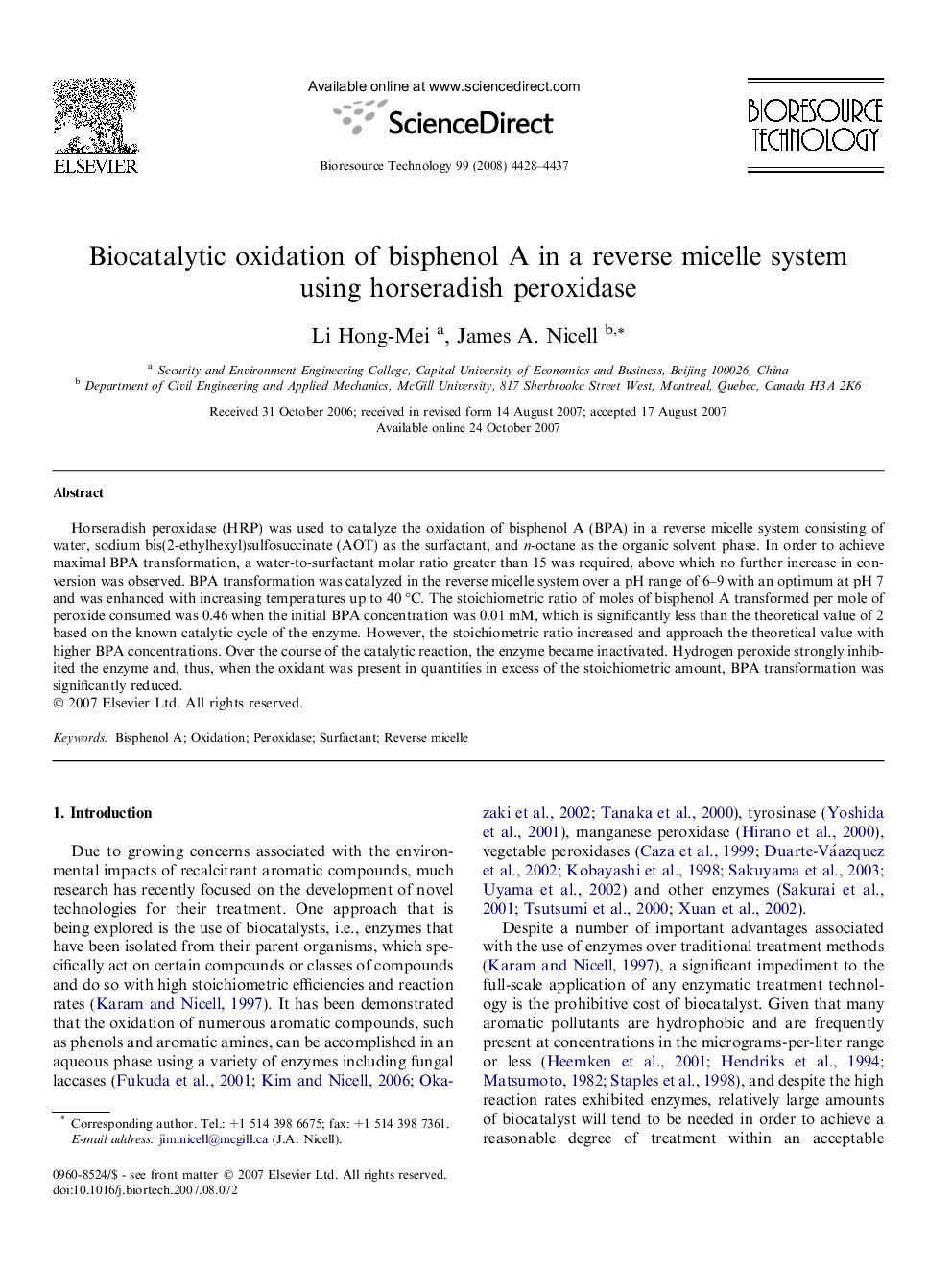| Article ID | Journal | Published Year | Pages | File Type |
|---|---|---|---|---|
| 684394 | Bioresource Technology | 2008 | 10 Pages |
Horseradish peroxidase (HRP) was used to catalyze the oxidation of bisphenol A (BPA) in a reverse micelle system consisting of water, sodium bis(2-ethylhexyl)sulfosuccinate (AOT) as the surfactant, and n-octane as the organic solvent phase. In order to achieve maximal BPA transformation, a water-to-surfactant molar ratio greater than 15 was required, above which no further increase in conversion was observed. BPA transformation was catalyzed in the reverse micelle system over a pH range of 6–9 with an optimum at pH 7 and was enhanced with increasing temperatures up to 40 °C. The stoichiometric ratio of moles of bisphenol A transformed per mole of peroxide consumed was 0.46 when the initial BPA concentration was 0.01 mM, which is significantly less than the theoretical value of 2 based on the known catalytic cycle of the enzyme. However, the stoichiometric ratio increased and approach the theoretical value with higher BPA concentrations. Over the course of the catalytic reaction, the enzyme became inactivated. Hydrogen peroxide strongly inhibited the enzyme and, thus, when the oxidant was present in quantities in excess of the stoichiometric amount, BPA transformation was significantly reduced.
